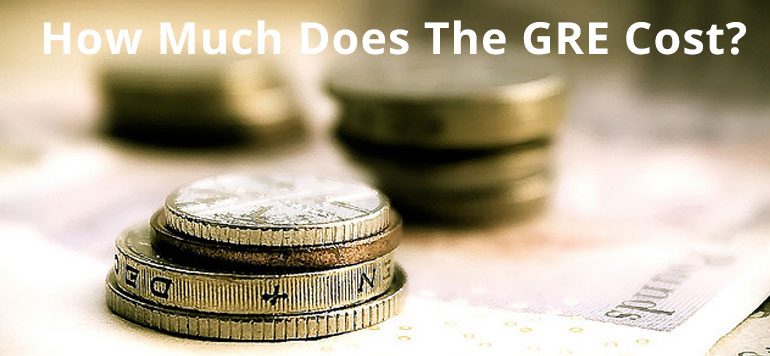GRE Quantitative Comparison questions make up almost 40% of GRE quant, and hence can singlehandedly decide the kind of score you’ll be getting on the test. Which is why it is safe to say that you’re able to get a good grip on this question type, then it’s safe to say that almost half of the battle is won.
Having said that, most test takers are not well equipped to answer GRE Quantitative Comparison questions, mainly because quantitative comparison as a concept is not very common outside of the GRE exam. It’s not something that you would have learnt in school, yet it is an important part of the GRE math section.
Quantitative comparison is a unique type of question, and the answer choices that accompany this question type are also unique.
It is hence important that you understand how this question type works, and learn the techniques required to solve such questions quickly and easily. Quantitative comparison is one of those rare topics that you’ll have to start from the very beginning. And this guide will help you do exactly that.
Introduction to GRE Quantitative Comparison
Quantitative comparison, or QC, is a new question type that the GRE throws at you. These questions are not like standard math problems you’ll find on a common standardized test and the fact that they are so unique to the GRE makes them look strange at first.
Of the 20 questions in each math section, 8 – 9 questions are quantitative comparison questions. On the GRE exam, you’ll see almost 18 questions from this question type – and that means about half of your math score will depend on how good you are with this QC questions.
That’s how important this question type is. So you’ll need to be adept at answering these questions efficiently, and quickly.
If there’s any good news about QC questions it is this – these questions typically take less time to solve that the rest of the math questions. A good number of QC questions can be solved in around a minute, and even the hardest of questions can be solved in under 90 seconds. They don’t consume a lot of your time. So you can use the time that you save here on the more complex questions in problem solving.
Having said that, less complex doesn’t always mean easy. Don’t be under the impression that quantitative comparison questions are much easier than the rest of the math questions. Well, some are, but not all. On the GRE, you will definitely come across QC questions that are hard to grasp.
So the trick is that you need to know how to solve them – you need to be well versed with the answering strategies. As with every other topic on the GRE, if you’re good with the basics, you should do a good job with QC questions.
An important question you need to ask yourself here is what skills are needed to be able to ace any GRE quantitative comparison question.
ETS gives you a good idea of what you need to do:
- reason quickly and accurately about the relative sizes of two quantities, and
- perceive that, in some cases, not enough information is provided to make such a decision
So to put it succinctly, you need to be able to understand the values of the given quantities, and compare them using reason, while keeping in mind that a comparison may not always be possible.
But you can go a little further and say that there are a few more skills you need to have in order to excel in this area:
- You should be good at analyzing data and come to logical conclusions using basic mathematical concepts
- You must have sound knowledge of all the fundamental concepts of mathematics
- You should be able to understand complex questions and the nature of a twisted form of questioning
- You need to answer complicated questions quickly in a time-constrained setting
If you can hone these skills during practice, you can be sure to answer any GRE quantitative comparison question that you might come across.
GRE Quantitative Comparison Question Format
In addition to understanding the skills you need to hone, if you want to be successful with QC questions, it is important that you understand the format, because it helps you know what a QC question looks like, and what you can expect from it on the test.
GRE Quantitative comparison questions ask you to compare two quantities that are given to you and determine the relationship between them.
Each question starts with a question stem, followed by two quantities, Quantity A, and Quantity B, which you are required to compare and determine whether one of them is greater than the other, or if the two quantities are equal, or if there’s no way to compare them.
The question stem includes added information that gives context to the given quantities, and you should understand that this information applies to both the quantities.
Note that the two quantities will always be labeled as Quantity A and Quantity B, and the answer choices that follow every QC question will be the same as below:
A. Quantity A is greater.
B. Quantity B is greater.
C. The two quantities are equal.
D. The relationship cannot be determined from the information given.
Let us now look at a rather simple example question given by ETS:
Example:
Lionel is younger than Maria.
Quantity A Quantity B
Twice Lionel's age Maria's age
A. Quantity A is greater.
B. Quantity B is greater.
C. The two quantities are equal.
D. The relationship cannot be determined from the information given.
Explanation:
If Lionel’s age is 6 years and Maria’s age is 10 years, then Quantity A is greater, but if Lionel’s age is 4 years and Maria’s age is 10 years, then Quantity B is greater. Thus, the relationship cannot be determined. The correct answer is Choice D, the relationship cannot be determined from the information given.
…
Now, not all questions may be this simple and easy to solve, but this example gives you an idea of what a quantitative comparison question looks like. Quantitative comparison questions may test your knowledge of any math topic ranging from number properties to geometry. And that is why, in order to be able to compare the two quantities, you should be good at solving math problems in general. Remember that quantitative comparison is just another type of question that deals with math concepts in general.
One advantage of Quantitative Comparisons over problem solving questions, is that the answer choices in quantitative comparisons are always constant – they will never change from question to question.
Unlike problem solving questions, which have different answer choices for every question, when it comes to GRE quantitative comparison questions, your answer choices will always be the four choices that you just saw.
Since these answer choices won’t change at all, you should memorize them so that you don’t have to waste precious time reading them all over again on test day. It’s easy to remember them too – you can think of the options as: A is for A greater, B is for B greater, C is for equal, and D is for ‘cannot be determined.’
Now that we’ve understood what quantitative comparison questions are, you need to understand the most important strategy to solve these questions.
GRE Quantitative Comparison Strategies
Even though Quantitative Comparison on the whole may seem like one topic, the questions vary greatly in the kind of skills that they test. And as such, you are required to learn some specific techniques to solve QC questions on the GRE.
The five top techniques or strategies that are useful when solving QC questions are:
- Approximation
- Plugging in Numbers
- Matching Operations
- Looking for Equality
- Number Sense
- and others
Let us now look at each of these techniques in detail and understand how they can help.
QC Strategy #1 – Approximation
Approximation is easily the most important technique that you need in your arsenal when solving QC questions. While approximating is in general a good strategy on the GRE, especially when you are short on time, it is a much more powerful technique with respect to QC questions.
One of the important reasons why you need to use approximations on the GRE, is that the GRE is not a test of calculations. That means, you should never stress yourself to do a lot of tedious calculations on the test, especially when it comes to GRE quantitative comparison questions. More often than not, you’re only wasting your time if you’re doing lengthy calculations on a QC question.
Never do more calculations on the GRE than needed
Because you are only required to compare the given quantities and not calculate them, you should instead try to approximate values as much as you can, and solve the questions quickly.
Here’s an example question where we’ll use the approximation technique.
Example:
Quantity A Quantity B
Circumference of a circle with radius 6 36
A. Quantity A is greater.
B. Quantity B is greater.
C. The two quantities are equal.
D. The relationship cannot be determined from the information given.
Solution:
Since Quantity B is a constant, there is nothing you can do about it. So, it would be enough if you figured out the value of Quantity A.
Circumference of a circle = 2πR = 12π
Now you know that the value of π is 3.14, but you actually don’t have to calculate the value of 12π
This is where approximation comes into play. You just need to understand that π is greater than 3, and as such 12π is greater than 36.
With that simple insight you can easily figure out that Quantity A is greater than Quantity B.
And that is why approximations play such a great role in helping you answer questions without having to completely solve them.
QC Strategy #2 – Performing Mathematical Operations
Matching operations is another great technique that you can use to answer GRE quantitative comparison questions. In this technique, you perform the same mathematical operations on both the given quantities and then decide which of them is greater.
You can perform the basic mathematical operations such as addition, subtraction, multiplication, and division. But remember you can only multiply and divide by a positive number.
And the basic principle that you should never forget is that you should perform the same mathematical operation on both the quantities, and not just one of them.
Whatever you do to one quantity, be sure to do it on the other.
Here’s an example question where we’ll use this technique.
Example:
x and y are positive integers
Quantity A Quantity B
2x 2 + 8y + 12 2x 2 + 6y + 4
A. Quantity A is greater.
B. Quantity B is greater.
C. The two quantities are equal.
D. The relationship cannot be determined from the information given.
Solution:
If you look at these two quantities closely, you’ll be able to see that 2 is a common factor. So, divide the two quantities by 2 first, and you’ll get:
x 2 + 4y + 6, and x 2 + 3y + 2
Now, if you look again, you can see that x 2 + 2 is common between both the quantities, so you can subtract them both and see what happens.
4y + 4 and 3y
This is a much simpler comparison to make, and since we are told that y is a positive integer, 4y + 4 must definitely be greater than 3y. Which means, Quantity A is greater.
So, using mathematical operations, you can greatly simplify any GRE quantitative comparison question.
Question: Why aren’t you allowed to multiply or subtract by a negative number? Why just positive numbers in these two cases?
Give us your answer in the comments.
QC Strategy #3 – Plugging in Numbers
This is a very popular technique that you can use on the GRE in general. Whenever you are faced with a tough problem that involves a lot of variables, you can simplify it by just substituting the variables in the given quantities with small numbers.
But you need to be careful to substitute with only those numbers that are in line with the conditions put up by the question. For instance, if the question stem says that x and y are negative numbers, you cannot substitute them with positive numbers because that will lead to a wrong answer 100% of the time.
This may seem pretty basic right now, but it’s easy to miss when you’re under pressure. So, always make sure you’re plugging in the right numbers.
Plug in the right numbers based on given conditions.
Here’s the same example question that we solved previously, and see how can use the plugging in technique to solve it even faster.
Example:
x and y are positive integers
Quantity A Quantity B
2x 2 + 8y + 12 2x 2 + 6y + 4
A. Quantity A is greater.
B. Quantity B is greater.
C. The two quantities are equal.
D. The relationship cannot be determined from the information given.
Solution:
Since the question stem explicitly states that x and y are positive integers, and no other conditions are mentioned, you can assume x and y to be any positive numbers. It’s totally up to you.
Let us assume x = 1 and y = 2, substitute them in these quantities and see what happens.
Quantity A, which is 2x2 + 8y + 12, becomes 2(1) + 8(2) + 12 = 2 + 16 + 12 = 30
Quantity B, which is 2x2 + 6y + 4, becomes 2(1) + 6(2) + 4 = 2 + 12 + 4 = 18
So, clearly, Quantity A is greater.
You can even test this method on the same question using other numbers for x and y, and you will arrive at the same conclusion every time.
But the takeaway point here is that the plugging in technique really simplifies any complex linear and quadratic equation on the GRE, and you can use it to your benefit and solve questions in a matter of seconds.
As long as you adhere to the conditions mentioned in the question, you can actually plug in any numbers you want. But then there are a few numbers that you should definitely prefer over the rest, because these numbers are proven to make the whole process easier and faster.
These numbers are: 0, -1, 1, -2, 2, 1/2, -1/2, 5, -5, 10, -10.
The only limitation of this strategy is that you cannot always be certain of the answer. Remember that in some cases, you need to check two contradictory results to make sure the answer is not C or D. So, you should keep this limitation in mind before going ahead with the strategy.
QC Strategy #4 – Equating the Quantities
One of the less popular ways to solve GRE quantitative comparison questions that involve variables and negative signs is by trying to equate the two given quantities. This technique is simply an extension of
When quantities have expressions with positive signs, it is easy to solve them by simply plugging in a random number on both sides. But things aren’t so easy when negative signs are involved. In most of these cases, the answer will be either C or D.
In such cases, you should try and equate the two quantities in order to find whether the answer is C or D. If the two quantities are equal for all values of x then the answer will be C, but they are not, then the answer will be D.
This can be illustrated with an example.
Example:
Quantity A Quantity B
4x 2 - 3x - 10 x 3 + 3x 2 - 5x - 10
A. Quantity A is greater.
B. Quantity B is greater.
C. The two quantities are equal.
D. The relationship cannot be determined from the information given.
Solution:
Here, we can immediately see that the term -10 is common between the two given quantities. So if you can equate the rest of the expressions, then the two quantities will obviously be equal and the answer will be C.
The best way to make the rest of the expressions equal is to plug in 0. Since the question stem does not say anything about the sign of x, we can check with 0.
So we have:
Quantity A Quantity B>
4(0) - 3(0) - 10 0 + 3(0) - 5(0) - 10>
-10 -10
So the two quantities are now equal.
But this doesn’t mean the answer is C. It needs to be checked if the two quantities will always be equal, no matter the value of x. So, let us check with 1.
Quantity A Quantity B
4(1) - 3(1) - 10 1 + 3(1) - 5(1) - 10
-9 -11
So, the two quantities are clearly not equal for all values of x. With that, you can conclude that D is the correct answer choice.
QC Strategy #5 – Number Sense
The four strategies that were discussed until now are systematic, and they all have a certain repeatable technique that you can subscribe to. But this strategy is different.
Sometimes, this strategy gives you the answer almost immediately. But this requires a sense of numbers and how they work.
Here’s an illustration of this strategy at work.
Example:
x > 5
Quantity A Quantity B
(4x - 3)/5 (5 - x)/5
A. Quantity A is greater.
B. Quantity B is greater.
C. The two quantities are equal.
D. The relationship cannot be determined from the information given.
Solution:
If you look at the question here, you can see that since x > 5, 4x > 20
Assuming it’s 20+, Quantity A becomes 17+/5 = 3+
So Quantity A has a minimum value of 3 point something
For Quantity B, since x > 5, 5 – x < 0 and dividing it by 5 again would make it even lesser than 0.
From this, it’s clear that Quantity A is positive and greater than 3, while Quantity B is negative.
So, Quantity A is clearly greater.
This problem could be solved without plugging in numbers, or doing any mathematical operations, if you have the presence of mind and a sense of how numbers work. With enough practice, you will be able to identify such patterns immediately.
Another example of having number sense is when you have a GRE quantitative comparison question where if Quantity A contains an expression, and Quantity B is equal to some value X, and if while calculating the value of A you find that it is equal to X + some other value Y, and you are 100% sure that Y is positive, then you can immediately conclude that Quantity A is greater than Quantity B without solving the quantity entirely.
Don’t bother with the rest of the calculation and put A as the answer. This technique will save you a ton of time on the quant section on test day.
So, those are the top 5 most important GRE quantitative comparison strategies that you need to remember when solving QC questions on the GRE.
General Tips for Answering GRE Quantitative Comparison Questions
In addition to the answering strategies and techniques discussed above, here are a few general tips that will help you solve QC questions much better.
1. Be careful with the answer choices
GRE Quantitative Comparison questions always have the same answer choices, so get to know them, especially the last two answer choices – C and D. Select C only if you’re absolutely sure that the two quantities are exactly equal.
Also, be extra vigilant when selecting the answer choice D, which says “The relationship cannot be determined from the information given.” Do not choose D as the right answer, if it is clear that the values of the two quantities can be determined by computation. Also, if you determine that one quantity is greater than the other, make sure you carefully select the corresponding choice so as not to reverse the first two choices.
2. Never choose D if there are no variables
If the quantities in any question contains no variables at all, and all the terms are real numbers, then you cannot say that the relationship between the two quantities cannot be determined. This is because as long as there are no variables, you should be able to determine that there is some kind of a relationship between the two quantities. They should either be equal, or one of them should be greater.
3. Remember the answer choices
Since the answer choices are going to be same for every QC question, you can save time by remembering the order of the answer choices by heart. You can also prepare an answer grid on your scratch paper beforehand and save more time by skipping the back and forth on the answer choices. You already know which answer choice to mark as correct, even as you’re solving the question on your scratch paper.
4. Move on if you’re stuck
It is vital to keep in mind that, in any particular GRE section, all questions carry equal weight. This means that the questions that are easy to solve or require less time are worth the same as the complex or difficult ones. So, it is better to mark a difficult question and revisit later than to waste your time on it.
5. Avoid unnecessary calculations
Remember that this is quantitative ‘comparison’ that you are dealing with – not quantitative ‘computation’. As such you don’t need to calculate the entire quantity. Don’t waste time performing needless computations in order to compare the two quantities. Simplify, transform or estimate one or both of the given quantities only as much as is necessary to compare them.
For example, it doesn’t require a calculator to tell whether 2 x 5134 is greater or lesser than 3 x 5134. Of course, the questions on the GRE aren’t this straightforward and simple, but you get the point. Your job is to just compare and find out whether one of the given two values is greater than, equal to, or less than the other. You don’t have to solve and calculate every time.
There will be instances where you have no choice but to compute the answers and only then you will be able to compare the two quantities. But in all other cases you can figure out which of the two quantities is greater, without having to calculate it altogether.
6. Make the two quantities look alike
In order to be able to compare the given two quantities, you should try and make them look as similar as possible. If there is a quadratic equation on one side, and a linear equation on the other, try to transform one of the two equations to make them similar to the other. Similarly, if there is a decimal on one side and a fraction on the other, convert one of them to be in the same form as the other. Such simple steps will help avoid confusion and will let you answer questions correctly and quickly.
7. Practice in a timed setting
Because the GRE is a time intensive test, you should ideally practice solving questions in a timed setting. This is more relevant in the case of quantitative comparison questions, because as discussed above, you can actually solve most QC questions in under a minute. Some of the harder questions may take more than 90 seconds to solve, but if you practice them enough, you’ll be able to get it down to 60 seconds. That is why it is super important to practice solving GRE questions with a timer by your side.
8. Remember that figures are not always accurate
This is an important fact that you need to constantly remind yourself of – any type of geometric figures on the GRE are not always necessarily drawn to scale. Which means, a triangle that looks like a right angled triangle is not, unless explicitly mentioned in the question stem. Two circles may have the same size, but their radii are not always equal, unless the question says so.
You can always redraw the figure on your scratch paper if any aspect of the figure cannot be fully determined. Keep those aspects that are completely determined by the given information fixed but changing the aspects of the figure that are not determined. Once you do this, you can examine the results.
9. Plug in numbers
This is one of the most popular yet effective strategies that can be used on any GRE question in general. But it’s much more relevant when solving QC questions. If one or both of the quantities are algebraic expressions, you can substitute easy numbers for the variables and compare the resulting quantities in your analysis. Consider all kinds of appropriate numbers before you give an answer: e.g., zero, positive and negative numbers, small and large numbers, fractions and decimals. If you see that Quantity A is greater than Quantity B in one case and Quantity B is greater than Quantity A in another case, choose “The relationship cannot be determined from the information given.”
10. Simplify the comparison
If both quantities in a QC question are algebraic or arithmetic expressions and you cannot easily see a relationship between them on first glance, you can try to simplify the comparison even further and see how the two quantities stack up against each other. For instance, when you have an equation in both x and y, try a step-by-step simplification that is similar to the steps involved when you solve the equation for x, and once you have both the sides ready with an equation in x, you can easily compare the two quantities.
Additionally, if both expressions include the same term, you can safely “cancel” that term from each one – by either adding or subtracting it from both quantities. This technique may help simplify one or both of the expressions, thereby revealing the comparison. Remember: you don’t change the relative value of two expressions merely by adding or subtracting the same terms from each one.
11. Focus more on concepts than numbers
As mentioned multiple times throughout this post, GRE Quantitative Comparison questions are not designed to require involved calculations. Although a bit of calculation wouldn’t hurt and may in fact help confirm the right answer, but if you’re doing a lot of number crunching on test day, you’ll run the risk of probably overlooking whatever math concept is at the heart of the question.
12. Don’t assume that a variable is a positive, whole number
One of the trickiest questions on the GRE can be x 2 compared to x 3. Most examinees will instantly assume that x3 is larger. However, if x is a fraction, then x 2 would actually be larger. Thus, the answer would be (D), the relationship cannot be determined. When you see a variable on the GRE, consider whether it can be a fraction or a negative number. These values often drastically change the answer for a quantitative comparison question.
Got any GRE Quantitative Comparison Strategies?
So those are some powerful tips and strategies that you can use to solve GRE quantitative comparison questions. If you’re able to put these strategies into practice, and if you do enough practice, you can be sure to ace any quantitative comparison question on the GRE.
If you know of any other GRE quantitative comparison tips and strategies that you have developed or encountered during your GRE prep, let us know in the comments, and we’ll share them with everyone else.
But if you’re still studying for the GRE, and you need help with your prep, then we at CrunchPrep are here to answer any questions you may have. We’ve helped hundreds of our students score 170 In the quant section, and we can help you get the top score as well. Reach out to us if you would like us to assist you with your GRE prep.
If you would like to practice QC questions of varying difficulty levels, you can sign up here.










Thanks a lot for this information. I loves to read your blog. Keep it up